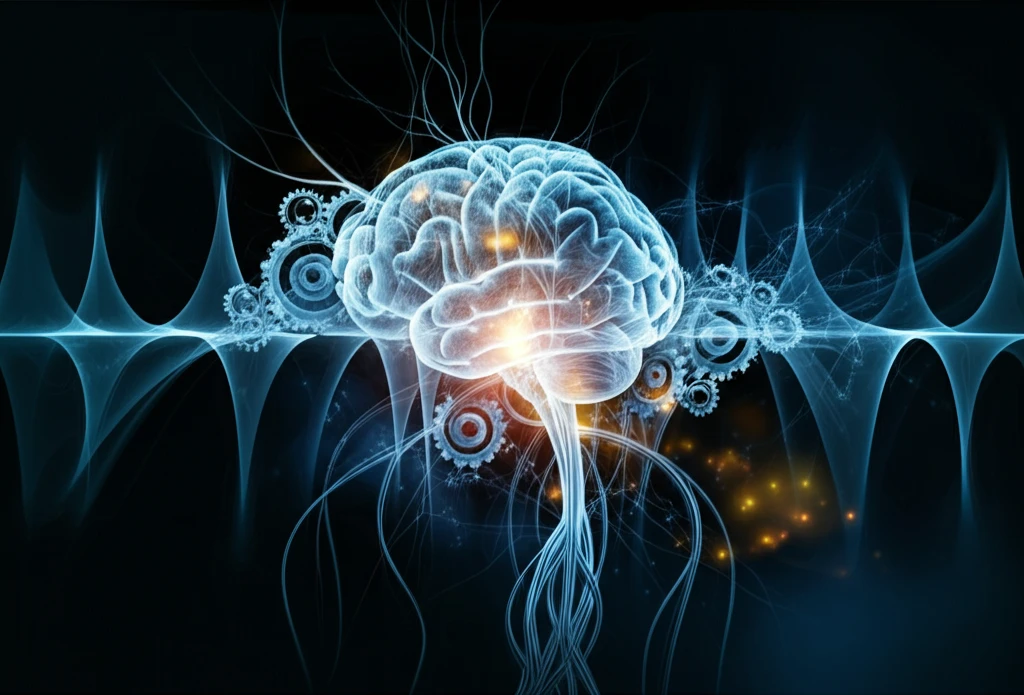
Untangling TMJ, Nerves, and Neurological Symptoms: A Biomechanical Dental Approach
"Could your jaw be the missing piece? Explore how dental treatments are offering new hope for neurological and neuropsychiatric relief."
For years, the medical community has investigated the intricate relationship between the temporomandibular joint (TMJ), the trigeminal nerve, and a wide range of neurological and neuropsychiatric symptoms. Emerging research suggests that dysfunction in the TMJ can trigger inflammation of the trigeminal nerve, potentially leading to or exacerbating conditions like Tourette's syndrome, cervical dystonia, blepharospasm, gait disorders, and even Parkinson's disease. This opens a new frontier for treatment, focusing on biomechanical dental interventions to alleviate these debilitating conditions.
The trigeminal nerve, the largest of the cranial nerves, plays a crucial role in sensory innervation to the face, jaw, and teeth. It has three major branches: the ophthalmic, maxillary, and mandibular nerves. The auriculotemporal (AT) nerve, a branch of the mandibular nerve, specifically provides sensory innervation to the TMJ capsule. Dysfunction in the TMJ can compress or irritate the AT nerve, leading to a cascade of aberrant signals that travel to the brainstem and beyond.
This article dives deep into the groundbreaking work of researchers and clinicians who are pioneering biomechanical dental treatments to address TMJ-related neurological symptoms. We'll explore case studies, treatment protocols, and the underlying mechanisms that explain how realigning the jaw can unlock relief for a variety of seemingly unrelated conditions. Discover how this innovative approach is offering new hope to those who have struggled with traditional medical interventions.
How Does TMJ Dysfunction Trigger Neurological Symptoms?

The connection lies in the intricate neuroanatomy of the trigeminal nerve. When the TMJ is misaligned or inflamed, it can compress the auriculotemporal nerve, causing a constant barrage of abnormal sensory input to the brainstem. This can lead to neuroinflammation, affecting various brain regions responsible for motor control, sensory processing, and cognitive function.
- Aberrant Reflexes: Disrupted signals in the brainstem can lead to aberrant reflexive behaviors, such as tics in Tourette's syndrome or involuntary head movements in cervical dystonia.
- Sensory Amplification: Neuroinflammation can amplify sensory signals, leading to heightened sensitivity to pain, light, sound, or touch. This can manifest as migraines, photophobia, or allodynia.
- Motor Dysfunction: Disrupted signals can interfere with motor control, causing tremors, rigidity, gait disturbances, or blepharospasm.
- Cognitive Impairment: Neuroinflammation can affect cognitive function, leading to brain fog, difficulty concentrating, or memory problems.
A New Hope for Neurological Relief
Biomechanical dental treatments offer a promising new avenue for addressing neurological and neuropsychiatric symptoms related to TMJ dysfunction. By realigning the jaw and decompressing the trigeminal nerve, these interventions can help to restore normal neural function and alleviate debilitating symptoms. While more research is needed to fully understand the mechanisms and efficacy of these treatments, the existing evidence suggests that they hold significant potential for improving the lives of those who have struggled with traditional medical approaches.
